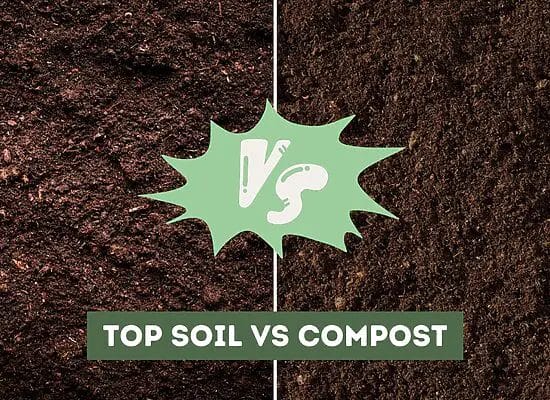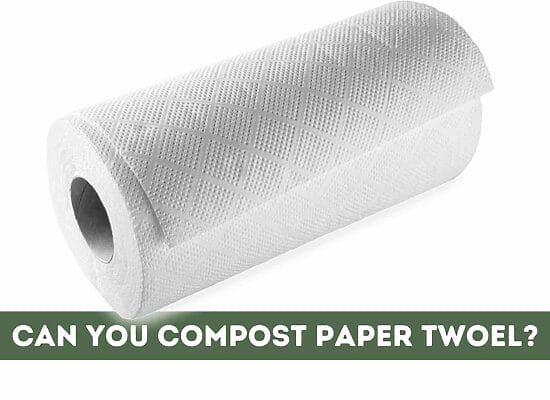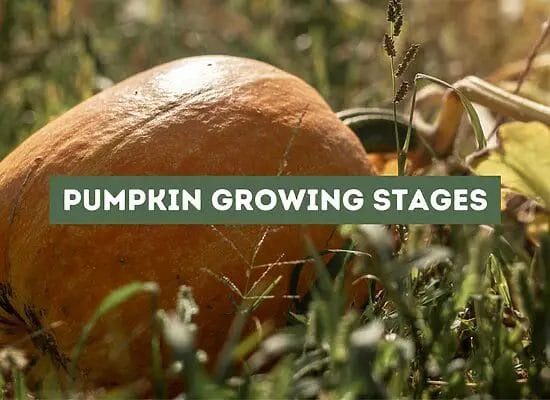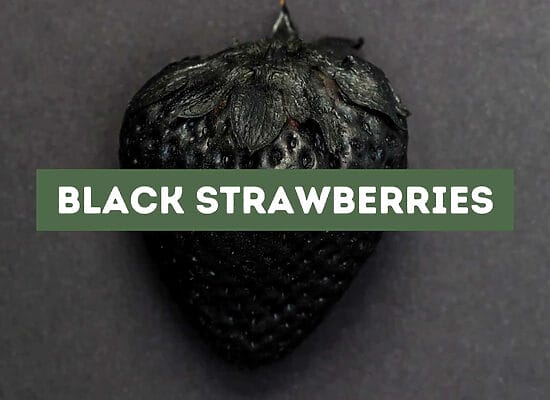
If you’re looking for a unique and rewarding hobby, bonsai benjamina ficus might be just what you need. Bonsai is an ancient art form originating from China and Japan that involves growing and shaping miniature trees in containers. Ficus benjamina, also known as the weeping fig, is a popular choice for bonsai enthusiasts due to its adaptability and forgiving nature.
The ficus benjamina bonsai is a stunning evergreen tree with small, glossy leaves that can be shaped into a variety of styles, such as formal upright, informal upright, and cascade. It is a relatively easy tree to care for, making it a great option for beginners. With proper care, your bonsai can live for decades and become a cherished family heirloom.
Below, we’ll cover everything you need to know about growing and caring for your ficus benjamina bonsai, from choosing the right container and soil to pruning and training techniques.
Key takeaways:
- Bonsai Benjamina Ficus Overview
- Bonsai Benjamina Ficus, also known as weeping fig, is a popular choice due to its adaptability and forgiving nature.
- It’s an evergreen tree with small glossy leaves that can be shaped into various styles.
- Great for beginners due to its ease of care.
- Optimal Environment
- Choose between indoor and outdoor cultivation; indoor bonsai requires more attention to temperature, humidity, and light.
- Provide bright, indirect sunlight for indoor bonsai and protect from drafts and cold temperatures.
- Watering and Moisture
- Keep the soil moist but not waterlogged.
- Water daily during summer and reduce to three times a week in winter.
- Maintain high humidity levels between 50-70%.
- Light and Temperature
- Bonsai Benjamina Ficus needs 4-6 hours of direct sunlight daily.
- Preferably maintain temperatures between 60°F and 75°F.
- Artificial light might be necessary during winter months.
- Pruning and Shaping
- Regular pruning controls size and shape, promotes new growth, and maintains health.
- Choose a style (e.g., formal upright, informal upright) and use wiring to shape branches and trunk.
- Fertilization and Soil Nutrition
- Well-draining soil mix (sand, peat moss, perlite) is crucial.
- Balanced fertilizer with nitrogen, phosphorus, and potassium is needed during the growing season.
- Use slow-release fertilizer in winter.
- Propagation Techniques
- Propagate through stem cuttings or seed propagation.
- Stem cuttings involve cutting a 4-5 inch stem, dipping it in rooting hormone, and planting it in well-draining soil.
- Seed propagation is possible but takes longer and requires careful care.
Understanding Bonsai Benjamina Ficus
Bonsai Benjamina Ficus is a popular choice for bonsai enthusiasts due to its unique shape and ease of care. This species is native to tropical climates, specifically Asia and Australia, and is an evergreen tree that can grow up to 60 feet tall in nature. However, when grown as a bonsai, it can be kept small and compact, making it perfect for indoor cultivation.
One of the best features of the Bonsai Benjamina Ficus is that it is a good choice for beginners learning about the species. The leaves of the tree are small, and the roots are strong, making it easier to train a beginner in the care of the tree.
To care for your Bonsai Benjamina Ficus, you should provide it with bright, indirect sunlight and keep it in a warm, humid environment. The tree thrives in temperatures between 60-75°F (15-24°C) and should be protected from drafts and cold temperatures.
Watering is an essential part of caring for your Bonsai Benjamina Ficus. You should water the tree when the soil surface feels dry to the touch. Be sure not to overwater the tree, as this can lead to root rot.
Fertilizing is also important for the growth and health of your Bonsai Benjamina Ficus. You should use a liquid fertilizer every two weeks during the growing season, which is typically spring and summer.
Pruning is necessary to maintain the shape and size of your Bonsai Benjamina Ficus. You should prune the tree in the spring and summer months, removing any dead or diseased branches and shaping the tree as desired.
In terms of propagation, Bonsai Benjamina Ficus can be grown from seed or cuttings. However, it is important to note that propagation from seed can take several years to produce a tree suitable for bonsai cultivation.
Choosing the Right Environment
When it comes to growing and caring for your bonsai benjamina ficus, choosing the right environment is crucial. The environment you choose will affect the growth, health, and overall appearance of your bonsai tree. Here are some important factors to consider when choosing the right environment for your bonsai benjamina ficus.
Indoor vs. Outdoor
One of the first decisions you’ll need to make is whether you want to keep your bonsai benjamina ficus indoors or outdoors. While these trees can thrive in both environments, there are some key differences to keep in mind. Indoor bonsai trees typically require more attention and care, as they are more susceptible to changes in temperature, humidity, and light. Outdoor bonsai trees, on the other hand, are more resilient and can handle a wider range of conditions.
Location
Whether you choose to keep your bonsai benjamina ficus indoors or outdoors, it’s important to choose the right location. If you’re keeping your bonsai tree indoors, choose a spot that gets plenty of natural light but is not in direct sunlight. If you’re keeping your bonsai tree outdoors, choose a spot that gets plenty of sunlight but is protected from strong winds and extreme temperatures.
Temperature
Bonsai benjamina ficus trees prefer warm temperatures, ideally between 60 and 75 degrees Fahrenheit (15 and 24 degrees Celsius). Avoid exposing your bonsai tree to extreme temperatures, as this can cause stress and damage to the tree.
Humidity
Bonsai benjamina ficus trees thrive in high-humidity environments, ideally between 50 and 70 percent. If you’re keeping your bonsai tree indoors, consider using a humidifier to maintain the right humidity level. If you’re keeping your bonsai tree outdoors, be sure to water it regularly to keep the soil moist.
Drafts and Direct Sunlight
Drafts and direct sunlight can both be harmful to your bonsai benjamina ficus tree. Avoid placing your bonsai tree in areas where it will be exposed to drafts, as this can cause stress and damage to the tree. Similarly, avoid placing your bonsai tree in direct sunlight for extended periods of time, as this can cause sunburn and damage to the leaves.
Pro Tip: When choosing the right environment for your bonsai benjamina ficus tree, remember to consider factors such as temperature, humidity, and sunlight. By providing the right conditions, you can help your bonsai tree thrive and grow into a beautiful, healthy specimen.
Potting and Repotting
Potting and repotting are crucial aspects of growing and maintaining a healthy Bonsai benjamina ficus. When potting a new Bonsai, it is essential to choose a pot that is slightly larger than the root ball. The pot should have drainage holes to ensure that excess water can escape.
When it comes to soil, well-draining soils are essential. A mixture of sand and perlite can be added to the soil to improve drainage. A well-draining soil will prevent water from accumulating in the pot, which can lead to root rot.
Repotting should be done every two years or when the roots have outgrown the pot. It is important to remove all the old soil and trim any dead or damaged roots. Aerial roots can also be trimmed during repotting.
When repotting, it is recommended to use a potting mix that is specifically designed for Bonsai. This mix should have a pH of around 6.5 and should be well-draining. After repotting, water the Bonsai thoroughly and place it in a shaded area for a few weeks to allow it to recover from the stress of repotting.
Here are some tips to keep in mind when potting and repotting your Bonsai benjamina ficus:
- Choose a pot that is slightly larger than the root ball.
- Use a well-draining soil mix that is specifically designed for Bonsai.
- Add sand and perlite to improve drainage.
- Repot every two years or when the roots have outgrown the pot.
- Trim dead or damaged roots and aerial roots during repotting.
- Water thoroughly after repotting and place in a shaded area for a few weeks to allow it to recover.
Watering and Moisture Management
Watering your bonsai benjamina ficus is crucial for its survival. It is important to keep the soil moist but not waterlogged. Overwatering can lead to root rot, while underwatering can cause the leaves to wilt and dry out.
During the summer, you should water your bonsai daily. Check the moisture level of the soil weekly and water only when the top inch of the soil feels dry. In the winter, you can reduce watering to three times a week.
To ensure proper drainage, use a well-draining soil mix and a pot with drainage holes. You can also add a layer of pebbles at the bottom of the pot to improve drainage.
Monitoring the humidity level is also important for the health of your bonsai benjamina ficus. These trees prefer a humid environment, ideally between 50% to 70%. You can use a humidifier or place the bonsai on a water tray with pebbles to increase humidity levels.
To accurately monitor the moisture level of the soil, you can use a moisture meter. This tool will help you determine when it is time to water your bonsai.
Light and Temperature Requirements
The Ficus Benjamina Bonsai is a tropical plant that requires a lot of light to grow. It needs at least four to six hours of direct sunlight per day to thrive. Whether indoors or outdoors, your bonsai thrives best in a bright, warm spot basked in direct sunlight. Remember to shield it from harsh temperatures and drafts.
During the winter months, you may need to supplement the natural light with artificial light. You can use fluorescent bulbs or LED grow lights to provide the necessary light for your bonsai. Place the lights about 6 inches above the plant and keep them on for 12 to 16 hours per day.
In terms of temperature, the Ficus Benjamina Bonsai prefers warm temperatures between 60°F (15°C) and 75°F (24°C). It can tolerate temperatures as low as 50°F (10°C), but it’s best to keep it in the recommended temperature range. Avoid exposing your bonsai to sudden temperature changes, as this can cause stress to the plant.
During the summer months, you can keep your bonsai outdoors as long as the temperature is above 60°F (15°C). It’s important to keep it in a sunny location and to make sure it’s not in a shady area. The Ficus Benjamina Bonsai can adjust to shade, but it grows best in bright and sunny lighting.
Pruning and Shaping
Pruning and shaping your Bonsai Benjamina Ficus is an essential part of keeping your tree healthy and aesthetically pleasing. Pruning helps to control the size and shape of your tree, as well as promote new growth and maintain the health of the tree. Here are some tips for pruning and shaping your Bonsai Benjamina Ficus:
Pruning
- Prune your tree regularly to control its size and shape.
- Use sharp, clean pruning shears or scissors to make clean cuts.
- Cut back to just above a leaf or bud to encourage new growth.
- Remove any dead or diseased branches to maintain the health of the tree.
- Prune during the winter months when the tree is dormant to avoid stressing it.
Shaping
- Choose a style for your Bonsai Benjamina Ficus, such as formal upright, informal upright, slanting, semi-cascade, cascade, broom, clasped-to-rock, or rock-over-root.
- Use wiring to shape the branches and trunk of your tree. Be careful not to damage the bark or branches.
- Train your tree by gently bending and shaping the branches and trunk over time.
- Regularly trim the leaves to maintain the desired shape and size of your tree.
Fertilization and Soil Nutrition
To keep your Bonsai Benjamina Ficus healthy and thriving, it’s essential to fertilize it regularly. Fertilization provides the necessary nutrients that the plant requires to grow and develop. The type of fertilizer you use will depend on the soil and the stage of growth.
Soil
The soil is the foundation for the growth of your Bonsai. The soil should be well-draining, allowing excess water to drain away from the roots. A well-aerated soil is also essential for the growth of your Bonsai. A mixture of sand, peat moss, and perlite is an excellent choice for your Bonsai Benjamina Ficus.
Fertilizing
Fertilizing your Bonsai Benjamina Ficus is crucial to ensure its growth and health. A balanced fertilizer with equal parts of nitrogen, phosphorus, and potassium is ideal for Bonsai Benjamina Ficus. A 10-10-10 or 20-20-20 fertilizer is suitable for most Bonsai.
Fertilizer
The type of fertilizer you use will depend on the stage of growth of your Bonsai Benjamina Ficus. During the growing season, a liquid fertilizer can be used every two weeks. During the winter months, a slow-release fertilizer can be used to provide the necessary nutrients.
Disease and Pest Control
Bonsai benjamina ficus is susceptible to a variety of pests and diseases. Here are some common problems you may encounter and what you can do to prevent or treat them.
Pests
Aphids
Aphids are small, soft-bodied insects that suck the sap from the leaves and stems of your bonsai. They can cause leaves to curl and turn yellow. To control aphids, you can use insecticidal soap or neem oil. You can also introduce natural predators like ladybugs or lacewings to your bonsai.
Spider Mites
Spider mites are tiny, eight-legged pests that can cause leaves to turn yellow and fall off. They thrive in hot, dry conditions, so keeping your bonsai well-watered can help prevent an infestation. You can also use insecticidal soap or neem oil to control spider mites.
Mealybugs
Mealybugs are small, white, fluffy insects that can cause leaves to curl and turn yellow. They can also produce a sticky substance called honeydew that can attract ants. To control mealybugs, you can use insecticidal soap or neem oil. You can also introduce natural predators like ladybugs or lacewings to your bonsai.
Scale Insects
Scale insects are small, hard-shelled pests that can cause leaves to turn yellow and fall off. They can also produce a sticky substance called honeydew that can attract ants. To control scale insects, you can use insecticidal soap or neem oil. You can also introduce natural predators like ladybugs or lacewings to your bonsai.
Diseases
Fungal Problems
Fungal problems can cause leaves to turn yellow and fall off. They can also cause black spots or a white, powdery coating on the leaves. To prevent fungal problems, make sure your bonsai is well-ventilated and not over-watered. You can also use a fungicide if necessary.
Poor Growing Conditions
If your bonsai is not growing well, it may be due to poor growing conditions. Make sure your bonsai is getting enough light, water, and nutrients. You can also check the soil pH and adjust it if necessary. If your bonsai is in a drafty or cold location, move it to a warmer spot.
Propagation Techniques
If you want to propagate your Bonsai Benjamina Ficus, there are a few techniques you can use. The most common methods are stem cuttings and seed propagation.
Stem Cuttings
Stem cuttings are the most popular and easiest way to propagate your Bonsai Benjamina Ficus. To do this, you need to cut a stem from the mother plant that is about 4-5 inches long. Make sure to use a sharp and clean pair of scissors or pruning shears. After cutting the stem, remove the lower leaves and dip the cut end into rooting hormone. Then, plant the stem into a well-draining soil mix and water it thoroughly. Keep the soil moist and the cutting in a warm and humid environment until new shoots appear.
Seed Propagation
Growing Bonsai Benjamina Ficus from seed is also possible, but it takes longer and requires more care. You can either collect seeds from a mature tree or buy them from a reputable supplier. To start, soak the seeds in warm water for a few hours to soften the hard shell. Then, plant the seeds in a small pot with well-draining soil mix and cover them with a thin layer of soil. Water the soil and cover the pot with plastic wrap to create a humid environment. Keep the pot in a warm and bright location, but avoid direct sunlight. Once the seedlings emerge, remove the plastic wrap and continue to care for them as you would for a mature Bonsai Benjamina Ficus.
Pro Tip: When propagating your Bonsai Benjamina Ficus, make sure to use a well-draining soil mix and avoid overwatering. Overwatering can lead to root rot, which is a common problem with this species. Also, be patient and give your cuttings or seedlings enough time to develop new shoots and roots before transplanting them into a larger pot.
FAQ: Bonsai Benjamina Ficus
What are the different types of Ficus bonsai trees?
There are several types of Ficus bonsai trees, including the Ficus benjamina, Ficus microcarpa, and Ficus retusa. Each of these trees has a unique appearance and requires slightly different care.
How much light does a Ficus bonsai tree require?
Ficus bonsai trees require bright, indirect light. They should not be placed in direct sunlight, as this can scorch their leaves. If you notice that your Ficus bonsai tree’s leaves are turning yellow or brown, it may be getting too much light.
What is the price range for a Ficus bonsai tree?
The price of a Ficus bonsai tree can vary depending on its size and age. Smaller trees can cost anywhere from $20 to $50, while larger, more mature trees can cost several hundred dollars.
How can you create a Ficus benjamina Bonsai forest?
To create a Ficus benjamina Bonsai forest, you will need several young Ficus benjamina trees. Plant them together in a shallow container and prune them regularly to maintain their shape and size. Over time, the trees will grow together and create a beautiful, natural-looking forest.
What is the process for growing a Ficus Benjamina Bonsai from a cutting?
To grow a Ficus Benjamina Bonsai from a cutting, take a cutting from a healthy Ficus Benjamina tree and plant it in a well-draining soil mixture. Keep the soil moist and provide bright, indirect light. In a few weeks, the cutting should begin to grow roots and develop into a new tree.
How do you properly care for a Ficus Bonsai tree?
To properly care for a Ficus Bonsai tree, make sure to water it regularly, but avoid overwatering. Ficus Bonsai trees also need to be fertilized regularly and pruned to maintain their shape and size. It’s also important to keep them in a bright, indirect light and avoid exposing them to extreme temperatures.












